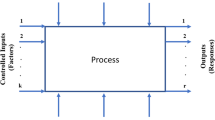Summary
Chairs and other furniture are seldom designed by help of structural mechanics and modern computers. Even if the designer uses a sophisticated CAD program, he, or she, will not use for example, finite element programs, FEM, in order to optimise the construction. Most furniture is made of wood or wood composites. Usually, structural mechanics is used for designing wood members in roof constructions and so forth. Because of the consequences of a breakdown, the allowable design stresses must be very low, about one third of the measured breaking strength. Smaller wood details could be chosen with more care and for chairs the result of a break would not necessarily lead to a disaster. However, a lot of the knowledge about how to design small wood structures emanates from the pre-war aeroplane industry. The difference between tensile and compression strength properties in wood also makes ordinary FEM programs hazardous to use because the background theory assumes that these properties are equal in magnitude. In this paper we show how to calculate the internal stresses of an undetermined chair frame and also show some material test results for Swedish alder, Alnus glutinosa.
Similar content being viewed by others
References
Asplund S. O. (1966): Structural mechanics: classical and matrix methods. Prentice-Hall/Englewood Cliffs, N.J.
Cai, L.; Wang, F. (1993): Influence of the stiffness of corner joint on case furniture deflection, Holz Roh-Werkstoff 51: 406–408
Eckelman, C. A. (1966): A look at the strength design of furniture. Forest Prod. J. 16(3): 21–24
Gustafsson, S. I. (1995): Furniture design by use of the finite element method. Holz Roh-Werkstoff 53: 257–260
Gustafsson, S. I. (1996): Finite element modelling versus reality for birch chairs. Holz Roh-Werkstoff 53(5) in press
Smardzewski, J.; Dziegielewski, S. (1993): Stability of cabinet furniture backing boards. Wood Sci. Technol. 28: 35–44
Tsoumis, G. (1991): Science and technology of wood. Van Nostrad Reinhold, New York
Wang, S. Y.; Juang, H. B. (1994): Structural behaviour of various joints in furniture components made of softwood laminated veneer lumber. Mokuzai Gakkaishi 40(9): 911–921
Author information
Authors and Affiliations
Additional information
This work has been financed by NUTEK, the Swedish National Board for Industrial and Technical Development. The author also wish to thank Dr. Lars Bernspång at the Luleå University of Technology, division of structural mechanics, for invaluable help with all calculations
Rights and permissions
About this article
Cite this article
Gustafsson, S.I. Stability problems in optimised chairs?. Wood Sci.Technol. 30, 339–345 (1996). https://doi.org/10.1007/BF00223553
Received:
Issue Date:
DOI: https://doi.org/10.1007/BF00223553




